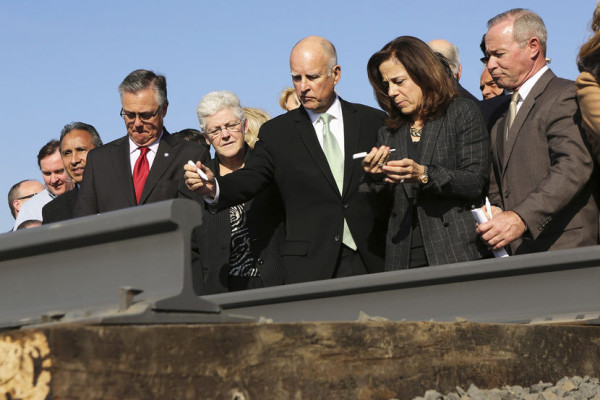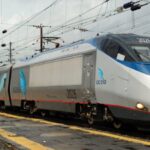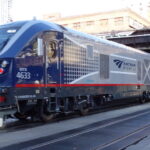High(er) Speed Rail? No Wonder People Are Confused.
Effective communication is an art. Some of the very best writing comes from people who are able to explain a complex idea in a 30-second radio or TV spot. It’s extremely hard to do that effectively.
Sometimes, however, a situation just evolves and there’s not a darn thing we can do except explain it … over and over. … and hope that people will finally get it.
Take, for example, the confusion surrounding two common terms frequently used by passenger rail advocates: “high-speed rail” and “higher speed rail”. There’s not a lot of difference between those two terms: high-speed … higher speed.

California Governor Jerry Brown (C) and his wife, Anne Gust, prepare to sign a railroad rail during a ceremony for the California High Speed Rail in Fresno, Calif., on Jan. 6, 2015. Photo by Robert Galbraith/Reuters
But this is where communication gets tricky … and where confusion starts to creep in. Because high-speed trains are faster than higher speed trains. And it’s an endless source of confusion among ordinary folks trying to absorb and understand all the discussion about the country’s transportation needs and what our priorities should be.
The accepted definition of “high-speed rail” refers to trains capable of running at speeds up to 200 miles per hour. It is a national embarrassment that there are no trains like that in the U.S. today. There are a few short stretches between New York and Boston where Amtrak’s Acela reach 150 mph, but that does not make it a “high-speed” train. California has just broken ground for a high-speed rail line that will take you from Los Angeles to San Francisco in something like two hours and 40 minutes. That’s high-speed rail … or will be when they get the damn thing built.
Meanwhile, the State of Illinois got some money from the federal government to upgrade the track and the signaling between Chicago and St. Louis. Trains on that route have run at an average speed of just over 50 mph with a top speed of 79 mph. Once all the track and signaling work is finished, the running time will be reduced by a full hour and trains will be able to run at sustained speeds of 110 mph. That’s high-er speed rail.
Got it? OK, now go explain it to your spouse. I dare you!



